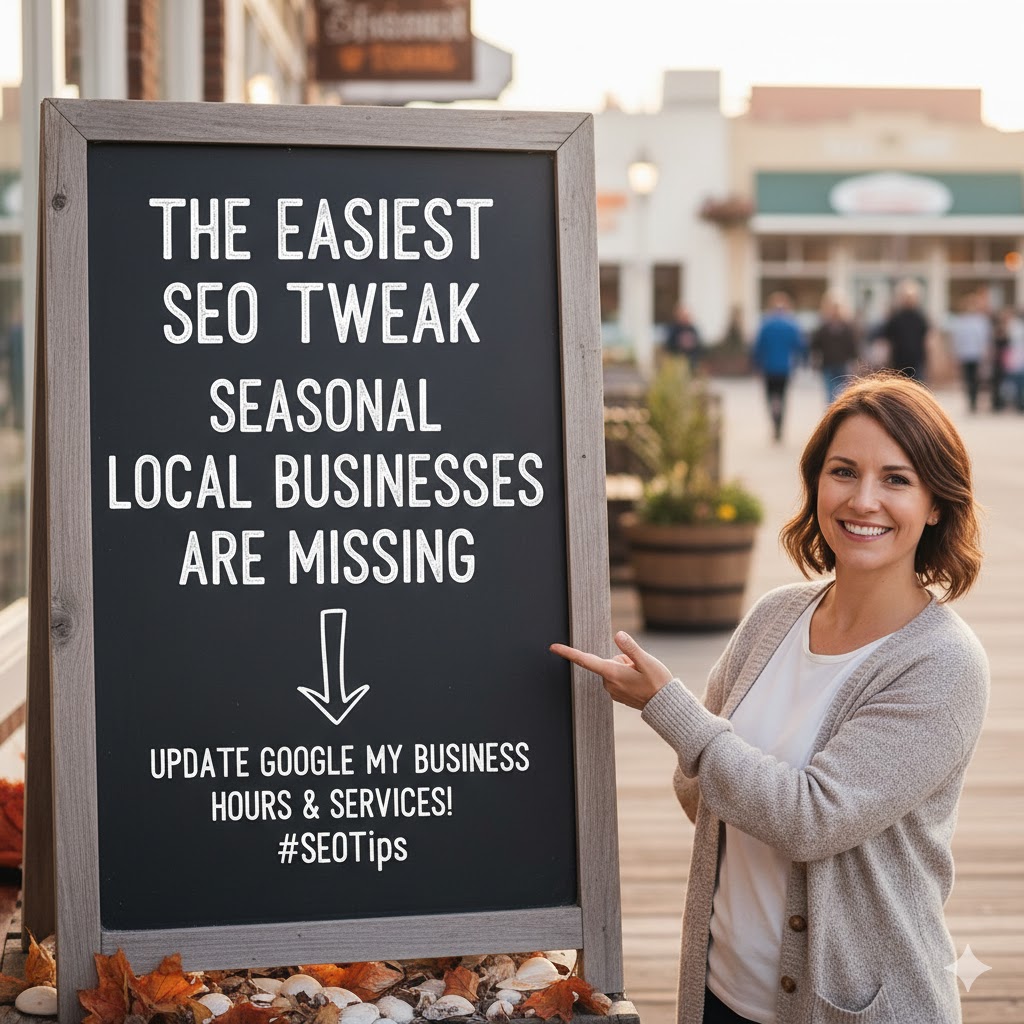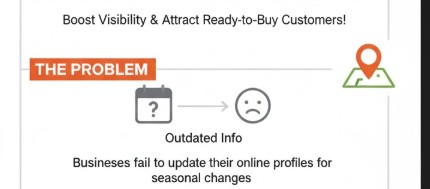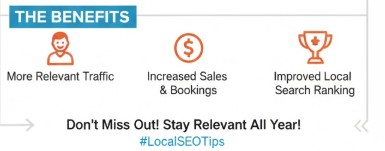Table of Contents


Want to Boost Rankings?
Get a proposal along with expert advice and insights on the right SEO strategy to grow your business!
Get StartedGoogle Business Profile (GBP) has always been one of the most powerful levers for local visibility. But here is the surprising part: many seasonal businesses overlook one of the simplest tweaks that can generate real results—updating their primary business category to match seasonal demand.
At Stan Ventures, we have worked with everything from local restaurants and retail shops to event planners and e-commerce brands.
- Why Seasonal Relevance Matters for Local SEO
- Real Examples of How Different Businesses Can Benefit
- Why This Works in Google’s Local Algorithm
- How Often Should You Change GBP Categories?
- Common Mistakes to Avoid
- How to Implement Seasonal Category Changes Without Overcomplicating
- Small SEO Tweaks, Big Seasonal Wins
- Key Takeaway:
Free SEO Audit: Uncover Hidden SEO Opportunities Before Your Competitors Do
Gain early access to a tailored SEO audit that reveals untapped SEO opportunities and gaps in your website.

And we have noticed a simple pattern: businesses that align their profile categories with seasons and cultural events not only rank better but also attract the right kind of traffic at the right time.
So why do so many local businesses overlook this? Let’s see what makes this tweak so powerful.

Why Seasonal Relevance Matters for Local SEO
Google’s local search algorithm is designed to serve what people want right now. If you are a restaurant that has not updated your profile before Valentine’s Day, you may miss people searching for “romantic dinner near me”.
If you are a retail store that keeps “Clothing Store” as your primary category during Black Friday, you are competing against everyone, while “Discount Store” or “Outlet” could position you directly for those high-intent queries.
Customers do not just search for generic terms, instead they search for timely solutions.

That is why categories that shift with the season make your business look more relevant, both to Google and to your customers.
That is why Glenn Gabe, an industry expert, emphasized this very tweak on X:
“If your primary category stays the same all year, you’re not aligning with the keywords people are using in real time. E.g. think about an HVAC company and AC versus heat.”
It is a straightforward reminder: be relevant to the season, or risk missing out on visibility.
Focus on Local? -> Why changing your primary category in GBP makes sense for seasonal local businesses
“If your primary category stays the same all year, you’re not aligning with the keywords people are using in real time.” E.g. think about an HVAC company and AC versus heat…… pic.twitter.com/YCe6PXiVsY
— Glenn Gabe (@glenngabe) October 8, 2025
Real Examples of How Different Businesses Can Benefit
Let’s consider a range of industries and seasonal triggers:
- Retail: A clothing retailer that usually lists “Clothing Store” could switch to “Discount Store” around Black Friday or “Gift Shop” during December. This makes the profile align with seasonal shopping intent.
- Restaurants: A restaurant listed as “Casual Dining” year-round might temporarily update to “Fine Dining Restaurant” before Valentine’s Day or “Brunch Restaurant” for Mother’s Day.
- Tourism & Travel: A travel agency that usually uses “Travel Agency” might change to “Cruise Agency” in summer or “Ski Resort Booking” in winter.
- Event Services: An events company could shift categories to “Halloween Store” or “Party Equipment Rental” in October, then switch to “Wedding Planner” in spring and summer.
- E-commerce Stores: An Ecommerce online business that sells year-round gifts could update to “Toy Store” in December, “Costume Store” in October, or “Jewelry Store” around Valentine’s Day.
This small tweak allowed them to capture traffic and leads that competitors, who left their categories static, were missing.
Why This Works in Google’s Local Algorithm
Google’s local search relies on three pillars: relevance, distance and prominence. Among these, relevance is usually the quickest factor you can influence.

By updating your category, you are signaling to Google that your business is a current match for what users are looking for.
This does not replace other SEO fundamentals like reviews, citations, or on-page SEO optimization but it complements them in a way that feels almost effortless.
Think of it as making sure your store window always matches the season. A shop with Christmas displays in July feels irrelevant, so does a GBP listing stuck on “furnace repair” in the middle of a heatwave.
How Often Should You Change GBP Categories?
This is one of the most common questions we get. If you change too often, you risk confusing both Google and customers. If you don’t change at all, you miss out on seasonal peaks.
Here is our Stan Ventures rule of thumb:
- Quarterly reviews: Every three months, revisit your GBP and decide if a category change is needed.
- Festival-driven changes: Update ahead of major events such as Halloween, Black Friday, Christmas, Valentine’s Day, Easter, Mother’s Day.
- Weather-driven services: For industries tied to climate (HVAC, landscaping, tourism), update whenever the season changes.
Timing matters. Don’t update your category on Christmas Eve and expect results the same day. Give Google at least a couple of weeks to register and reflect the change.
Common Mistakes to Avoid
Through our audits, we have noticed several mistakes businesses make when trying to do seasonal GBP optimization:
- Never Updating at All
Too many businesses set their primary category once and forget it forever.
- Staying Too Generic
A restaurant listed as just “Restaurant” during Valentine’s Day misses the chance to attract couples searching for “Romantic Restaurant.”
- Ignoring Secondary Categories
While the primary carries the most weight, don’t forget to update or add secondary categories that match seasonal demand.
- Late Updates
Updating your GBP for Black Friday on November 28th? That’s too late. Seasonal SEO is about being proactive.
How to Implement Seasonal Category Changes Without Overcomplicating
From our work with SMBs at Stan Ventures, here’s the practical workflow we recommend:
- Map out your seasonal services in advance. Know which months you’ll emphasize specific offerings.
- Update your primary category accordingly. Make the switch proactively, before seasonal demand peaks.
- Keep secondary categories consistent. These should reflect your year-round services for stability.
- Track visibility in Google Business Profile Insights. Look for shifts in impressions and search queries to validate the change.
This is not about chasing every micro-trend, it is about staying timely and relevant.
Small SEO Tweaks, Big Seasonal Wins
Sometimes, the most effective SEO strategies are not about complex overhauls or expensive tools. They are about small, thoughtful adjustments that align your digital presence with real-world customer behavior.
Updating your GBP category seasonally is one of those high-impact, low-effort wins. It keeps your business visible, relevant, and competitive at the exact time customers are searching for what you offer.
For seasonal businesses, whether HVAC, landscaping, tourism or beyond the rule is simple: be the business people need right now.
Key Takeaway:
At Stan Ventures, we have always focused that local SEO success is not just about technical expertise but about thinking like your customers.
Search engines reward relevance and relevance comes from meeting users exactly where they are, in their needs, in their seasons and in their intent.
So, the next time the seasons shift, do not just adjust your services offline. Adjust your digital storefront too.
A simple category update in your Google Business Profile could be the easiest and most impactful, SEO move you make all year.
About the author
Share this article
Find out WHAT stops Google from ranking your website
We’ll have our SEO specialists analyze your website—and tell you what could be slowing down your organic growth.














